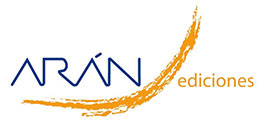Grupo de Trabajo SENPE
Nutrición parenteral domiciliaria en españa 2016; informe del grupo de nutrición artificial domiciliaria y ambulatoria nadya
Carmina Wanden-Berghe, Nuria Virgili Casas, Esther Ramos Boluda, Cristina Cuerda, José Manuel Moreno Villares, José Luis Pereira Cunill, Carmen Gómez Candela, Rosa Burgos Peláez, María Ángeles Penacho Lázaro, Julia Álvarez-Hernández, Montserrat Gonzalo Marín, Pilar Matía Martín, Ceferino Martínez Faedo, Eva Ángeles Sánchez Martos, Alejandro Sanz Paris, Cristina Campos Martín, Tomás Martín Folgueras, M.ª Ángela Martín Palmero, María de los Ángeles Martín Fontalba, Luis Miguel Luengo Pérez, Ana Zugasti Murillo, María José Martínez Ramírez, Fátima Carabaña Pérez, Cecilia Martínez Costa, Patricia Díaz Guardiola, Cristina Tejera Pérez, Rosa María Parés Marimón, José A. Irles-Rocamora, Carmen Garde Orbaiz, Miguel Á. Ponce González, María Victoria García Zafra, Rebeca Sánchez Sánchez, Juan Ramón Urgeles Planella, Antxón Apezetxea Celaya, Olga Sánchez-Vilar Burdiel, Clara Joaquín Ortiz, José Pablo Suárez Llanos, Begoña Pintor de la Maza, Pere Leyes García, M.ª Carmen Gil Martinez, Sílvia Mauri Roca, María José Carrera Santaliestra
 Número de descargas:
80949
Número de descargas:
80949
 Número de visitas:
9814
Número de visitas:
9814
 Citas:
3
Citas:
3
Compártelo:
Objective: To communicate HPN data obtained from the HPN registry of the NADYA-SENPE group (www.nadya-senpe.com) for the year 2016.Material and methods: Descriptive analysis of the data collected from adult and pediatric patients with HPN in the NADYA-SENPE group registry from January 1st, 2016 to December 31st, 2016.Results: There were 286 patients from 42 Spanish hospitals (54.2% women), 34 children and 252 adults, with 294 episodes, which represent a prevalence rate of 6.16 patients / million inhabitants / year 2016. The most frequent diagnosis in adults was “palliative cancer” (25.8%), followed by “others”. In children it was “motility alterations” with 6 cases (17.6%), Hirschsprung’s disease and necrotising enterocolitis, both with 5 children (14.7%). The first indication was short bowel syndrome in both children (64.7%) and adults (37.3%), followed by intestinal obstruction in 28.6% adults and 14.7% in children. The most frequently used type of catheter was tunnelled in both children (70.6%) and adults (37.9%). The most frequent complication in adults was infection related to the catheter, which presented a rate of 0.48 infections / 1,000 days of NPD. During this period, 71 episodes ended in adults and the main cause was death (57.7%) followed by resuming the oral route (31%).Conclusions: There is a progressive increase of centers and professional collaborators in the registry who report patients receiving parenteral nutrition at home. The main indications of HPN and the motive for ending have remained stable.
Palabras Clave:
Artículos más populares
Revisión: Inteligencia artificial generativa ChatGPT en nutrición clínica: avances y desafíos
ChatGPT y otras herramientas de inteligencia artif...
Revisión: Suplementación con micronutrientes y sus beneficios: ¿por qué y cuándo?
Introducción: los micronutrientes participan en la...
-
Licencia creative commons: Open Access bajo la licencia Creative Commons 4.0 CC BY-NC-SA
https://creativecommons.org/licenses/by-nc-sa/4.0/legalcode




